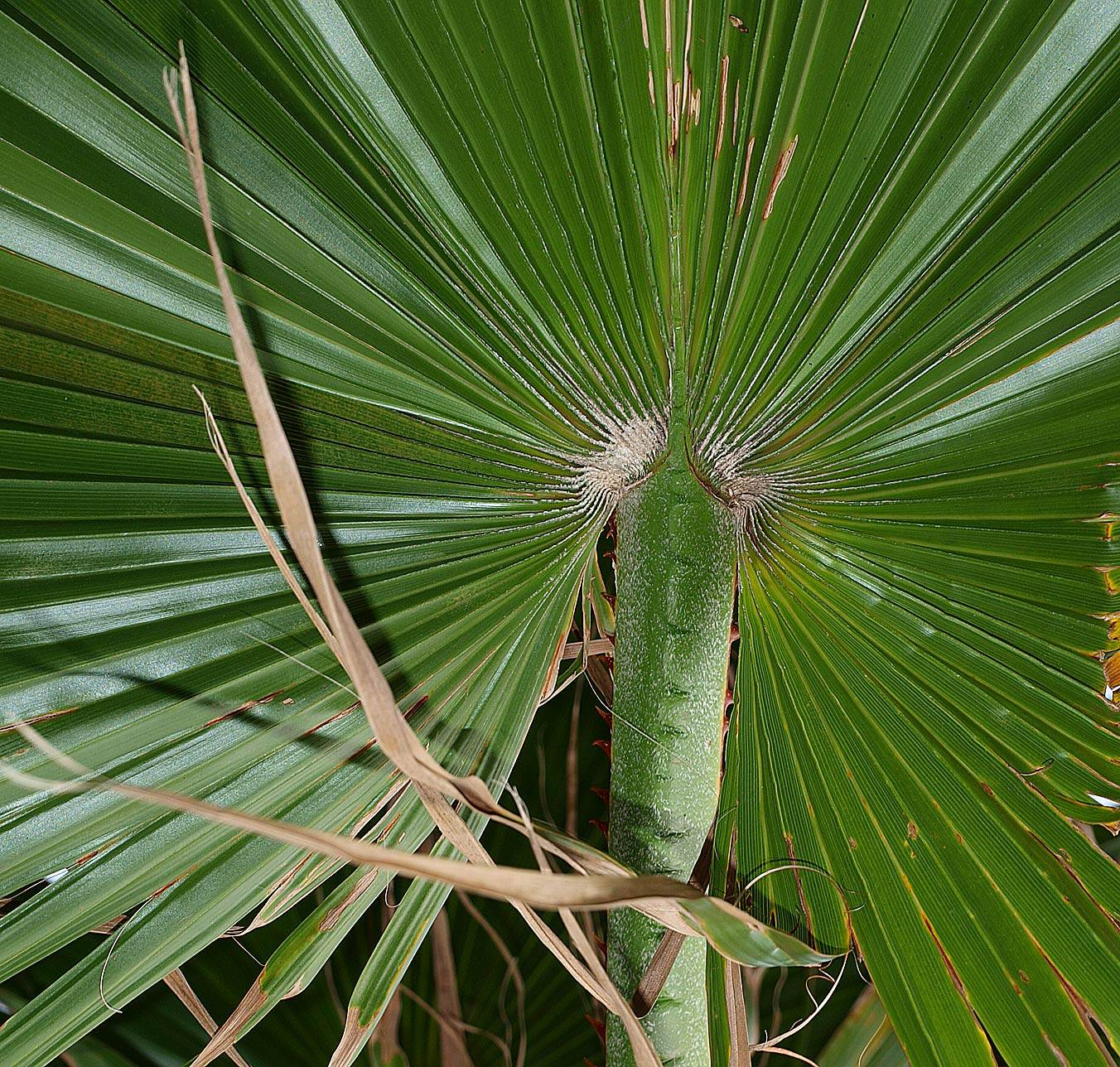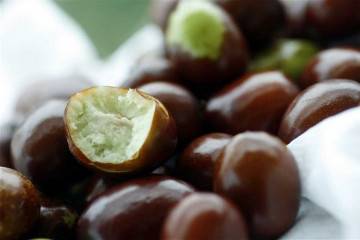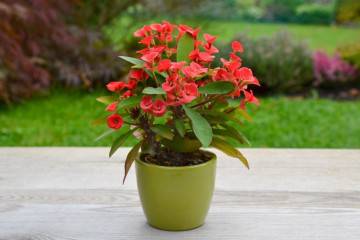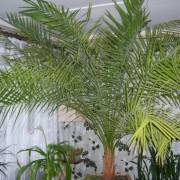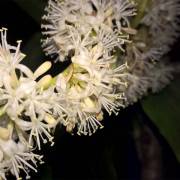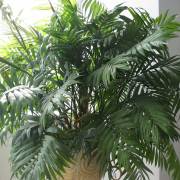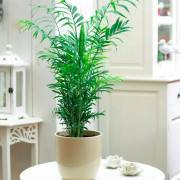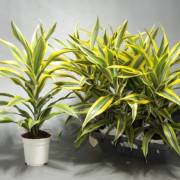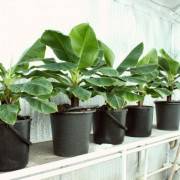Palm washingtonia - how to grow and care
Content:
Washingtonia is the name of a genus of trees in the Palm family, which includes 2 species - washingtonia filamentary and washingtonia strong. In nature, they are common in the subtropical climate zone, grow rapidly, reaching a height of 30 m. In some US cities, for example, in Miami, they are used to decorate streets. But the home form of this palm tree has also been bred, which has long left the borders of one continent and gained worldwide popularity, including in Europe and Russia.
Palm washingtonia - what is this flower
The plant is named after the first President of the United States, J. Washington. Caring for the washingtonia palm tree at home is quite simple. This is its main distinguishing feature. Difficulties can arise only in winter, but they can be easily solved. You can safely grow this plant, even inexperienced growers can cope with this.

Washingtonia room is experiencing difficulties in winter during the heating season, but everything can be solved
In houses, the palm tree does not reach its natural size, it is simply impossible. However, with good care, it reaches the maximum possible height of 3 m and more. The leaves are fan-shaped, wide with a diameter of more than 1 m, they are green and, depending on the variety, can have a grayish or more saturated shade. The trunk is dense, expanding towards the bottom due to the fact that wilted leaves die off and fall off (or are removed mechanically), but their petioles remain. A kind of skirt is formed.
Varieties of home flower
There are 2 types of palm trees grown in houses: Washingtonia filamentous (filamentous) and Washingtonia strong (powerful). Outwardly, they are similar, but there are a number of differences.
Washingtonia filifera
Distinctive features are the grayish color of wide leaves and many thin white threads on them. In order for the plant to overwinter normally in the house, the temperature should be reduced to 15 ° C and below, but it should not be lower than 5 ° C. However, you should not shade the room, it must remain well lit.
Washingtonia robusta
This variety originated in Mexico, which is why it is sometimes called Mexican. It is much higher than the string palm. The leaves are powerful bright green without the characteristic white threads. The leaf stalks are covered with thorns, all the foliage is located on top and looks quite compact. In care, a powerful variety is not as demanding as its relative; it can survive the winter in normal indoor conditions.
Caring for a palm tree at home
Without exception, all representatives of the Palm family, grown as indoor, are quite finicky. It is not easy to care for both types of washingtonia. To maintain an attractive appearance, a number of conditions will need to be met.
Illumination and temperature conditions
The palm tree needs bright lighting, but direct sunlight can harm and cause burns. The light should be soft and diffused.Therefore, western and eastern windows will do. In no case should drafts be allowed, this will immediately affect the condition of the plant. In summer, it can be taken outside, protecting it from direct sun exposure.
The optimum temperature during the growing season is 25 ° C, but it is permissible to slightly lower it. In winter, it is worth artificially introducing the flower into a dormant state, lowering the temperature to 10-15 ° C. In nature, Washington is capable of living in light frost, so low temperatures will not shock it.
Watering rules and humidity
In summer and spring, watering is carried out as the topsoil dries out. The water should be warm and settled. It is not worth overfilling, it will harm the root system, but drying out will destroy the plant. In winter, watering is carried out less often, after 2 days, after the soil has dried on top.
Air humidity is a very important indicator for this broadleaf flower. Regular spraying is mandatory, and in summer at high temperatures, you need to wipe the leaves with a wet cloth.
Top dressing and soil quality
The plant needs feeding 2 times a year - in spring and autumn, the rest of the time no fertilization is required. Any complex fertilizer for indoor plants or special fertilizers for palm trees, which are sold in most flower shops, are suitable. The soil must be nutritious, loose, breathable, drainage is required.
Flower container size
There are no special requirements for the vessel in which the plant is grown. A standard pot will do. It should fit the size of the flower's root system. When planting, there should be about 2 cm between the earthen lump and the walls of the flowerpot. The material from which it is made does not matter.
Pruning and replanting
As the plant matures, the leaves growing from the bottom turn yellow and dry out. Completely dried leaves are cut off.
Transplanting should be done with extreme care, as this plant variety is just as sensitive to this procedure as all other palms. It is carried out only when absolutely necessary. In the first 5 years, the flower is transplanted a maximum of twice as the root system grows. Adult flowers are transplanted only when the root system has grown and filled the entire flowerpot.
The procedure is carried out only in spring, at the very beginning of the active growing season. Step-by-step instruction:
- The new flowerpot is thoroughly washed, and the clay pot is soaked in water overnight so that all air bubbles come out of there.
- A drainage layer is laid on the bottom, which should make up 25% of the pot.
- The transfer is carried out by the transshipment method. The palm tree is well watered and carefully removed from the old pot along with a lump of earth.
- The lower roots are straightened with your hands (as far as possible).
- Washingtonia is carefully placed on the soil layer of the new pot, the gaps between the earthen lump and the walls of the vessel are filled with new soil. The soil is compacted gently.
- The palm tree is watered again, then for a week it is removed in the shade for adaptation, after which it returns to its original place.
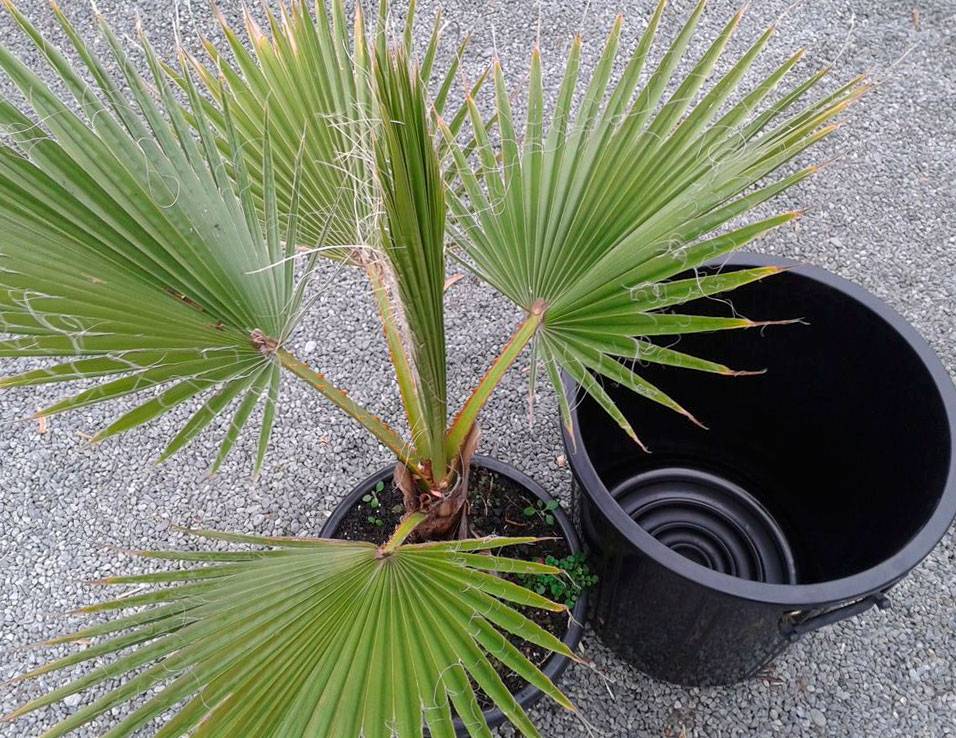
The choice of a new pot for a palm tree does not matter, the main thing is to disinfect it with boiling water before planting
Flowering and dormant period of the plant
Home-grown Washingtonia practically does not bloom. In nature, its flowers are quite spectacular, large, fragrant panicles. There is no pronounced dormant period for this palm tree.But she is artificially immersed in this state for better growth and development. This occurs during the winter months when the indoor temperature is reduced.
Palm propagation washingtonia
At home, many grow Washingtonia palm from seeds. This requires:
- Pick the right seeds. They must be fresh. You can buy them in the store or assemble them yourself while traveling in the United States.
- Carry out scarification of the planting material. A cut is made on them with a sharp blade, after which the seeds are immersed in a glass of water, where they are kept for 1 to 7 days.
- A nutritious and loose substrate is prepared.
Growing from seeds and filamentous and strong washingtonia should be carried out in the spring. Prepared seeds are laid out on a wet substrate. They are sprinkled with a layer of soil, which is 2 times thicker than the size of the planting material. The container with future plants is covered with glass or foil, which are systematically opened to ventilate and moisten the soil. The required germination temperature is 25-30 ° C. The first shoots will appear in a couple of months. After the appearance of the first two leaves, the seedlings dive to the main place of growth.
Growing problems, diseases and pests
In order for a palm tree to grow healthy and beautiful, you need to monitor its condition and pay attention to the smallest details:
- if the tips of the leaves darken, it is worth adjusting the watering and applying fertilizers containing potassium. If the problem is not resolved, you need to increase the humidity;
- if spots appear on the leaves, the plant signals either excessive watering or a sharp temperature drop;
- palm leaves periodically dry and die off, but this should not happen too often, otherwise this is a sign of rot;
- light spots and twisted leaves indicate an attack by insect pests. To combat them, insecticides are needed.
A distinctive feature of the Washingtonia palm tree is home care, it is not at all complicated. This is a beautiful, original and relatively unpretentious palm tree. Both of its species are easy to grow at home and are loved by gardeners. Beautiful fan leaves of the flower will organically fit into any interior and will be an excellent addition to it. The plant will never go unnoticed, it will give the home a touch of uniqueness and exoticism.


